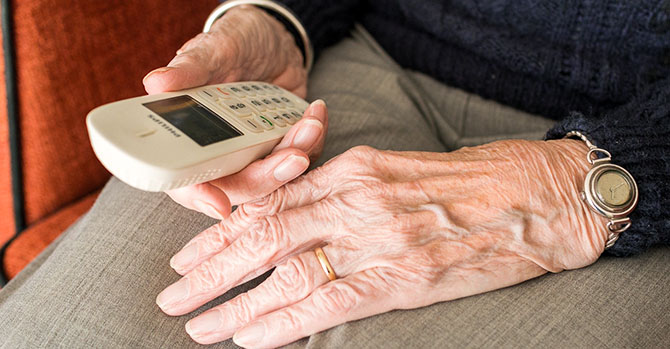Virtual Senior Center Helps Older Adults in Detroit Connect While Social Distancing

Gloria Moroshan has been in quarantine since March. Her few social interactions have been when her 4-year-old great grandson calls during his lunch breaks or by waving at neighbors when the weather is good enough to sit on the porch.
So the octogenarian, who is visually impaired and does not know how to work a computer, takes every chance she gets to participate in call-in classes such as art, financial literacy and relaxation lessons offered by the Methodist Children’s Home Society.
“These different classes that I’ve been taking are really amazing. They keep me motivated and being social because I can’t go out,” she said. “There’s a lot of tension now, everybody is anxious. The meditation one really relaxes you.”
The classes are offered by the Silver Center, a virtual senior center that offers enrichment and educational programs via phone to help adults 60 years old or older stay connected. While the program started before the pandemic, organizers hope it will mitigate some of the negative health and social impacts caused by social distancing during the coronavirus pandemic.
A team of University of Michigan researchers from the School of Public Health, School of Information and School of Social Work have partnered with Methodist Children’s Home Society to evaluate the program.
“Older adults living in economically and racially segregated neighborhoods in and around Detroit are disproportionately likely to confront obstacles to accessing centers,” said the program’s developer Norvena Wilson, associate director of senior programs at the Methodist Children’s Home Society. “Because senior centers promote social engagement and enrich the lives of older adults, this lack of access exacerbates existing inequities in health and well-being.”
After signing in for the program, participants get a reminder a half hour before the class starts. They’ve also received any materials they might need to follow along. Some of the classes currently available through the program include diabetes management, avoiding financial exploitation, gardening, Detroit in the Roaring ’20s by the Detroit Historical Society, and Picturing Music by the Detroit Institute of Arts.
At a recent class focused on the Detroit Institute of Arts, one by one, participants join the call and the instructor directs the class to a booklet with impressive photos of the museum.
For the next hour, the instructor will discuss the history behind the DIA, how it came to be, about artist Diego Rivera’s fascination with Detroit’s grit, and how some of the DIA’s most interesting pieces were saved during the Detroit bankruptcy. To raise their hand to ask a question, participants only need to press *5 on their phone.
“At first I was concerned I might not be able to understand it visually because I’m a visual person,” said Detroit resident James Jones, who started participating in the program a month ago. “I like to see pictures and colors and illustrations. But the class itself paints an illustration and just listening to the conversation you can visualize and communicate with other people, you can chime in.
“It’s interesting and something you can use during this time to relieve some of the stress due to the quarantine.”
While many Americans are staying socially connected during this period via technology, many older adults in marginalized communities have little or no tech access—a result of what has been called “digital redlining.”
“Low-income older adults and those with serious health problems are particularly vulnerable to the negative health and social impacts of isolation, and many lack the technology needed to connect virtually with the outside world,” said Mary Janevic, associate research scientist at the School of Public Health, who is working with Robin Brewer, assistant professor at the University of Michigan School of Information and Katrina Ellis, assistant professor at the School of Social Work in evaluating the program.
“Finding unique solutions to encourage social engagement when physically distant is critical to an enriched quality of life,” Brewer said.
The team will evaluate how participating in Silver Center activities may have helped participants cope with the isolation and stress of the COVID-19 pandemic.
“We will learn what went well, what can be improved and how we could expand the program,” Ellis said. “This can bring attention to new ways of delivering services to older adults. We also hope that it increases awareness of community resources, and opportunities for learning new things.”
This work is supported by a grant from the University of Michigan Edward Ginsberg Center.
- Interested in public health? Learn more today.
- Read more about coronavirus from Michigan Public Health experts.
